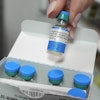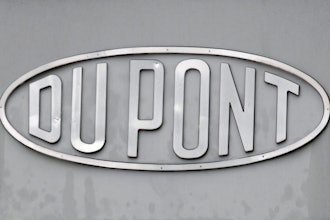
PORTAGE, Ind. (AP) — A water sample from Lake Michigan near a wastewater spill at a U.S. Steel plant in Indiana contained an elevated level of a potentially carcinogenic chemical but well below federal safety standards, the Chicago Department of Water Management said Thursday.
A sample containing 2 parts per billion of hexavalent chromium was taken in the lake about a mile north of the spill in Portage, Indiana, about 30 miles east of Chicago, the agency said.
That's "a level higher than would be expected to be found in raw lake water," the department said in a news release, but it's just a fraction of the Environmental Protection Agency's drinking water standard of 100 parts per billion for all forms of chromium.
A second sample taken nearby contained 1.6 parts per billion of hexavalent chromium, but 10 other samples taken in the same general area contained levels no higher than 0.21 parts per billion, agency data showed.
The EPA expects to start receiving results Friday from about 200 water samples it has collected following the Tuesday spill, spokeswoman Rachel Bassler said.
"Preliminary data suggests that hexavalent chromium from the spill is not present near drinking water intakes," Bassler said.
The EPA has said hexavalent chromium — a toxic byproduct of industrial processes — might be carcinogenic if ingested. The toxic heavy metal is used in a variety of industrial processes, including steelmaking and corrosion prevention, and as a pigment in dyes, paints and inks. It's also found in ash from coal-fired power plants.
A case involving the chemical was made famous by the 2000 film "Erin Brockovich," which was based on a utility's disposal of water laced with hexavalent chromium in unlined ponds near Hinkley, California. That disposal method polluted drinking water wells and resulted in a $333 million settlement.
U.S. Steel has said its release of the chemical was stopped at the source. It's not known yet how much was spilled, Bassler said.
Chicago Mayor Rahm Emanuel condemned the company's "careless conduct."
"U.S. Steel must immediately explain how they allowed a dangerous chemical into a Lake Michigan tributary where it could harm millions of people in Indiana and Illinois, and what they are doing to ensure this never happens again," Emanuel said in a statement Thursday.
U.S. Steel issued a statement Thursday evening saying it's identified the source of Tuesday's spill and "has made the necessary repairs."
"We are reviewing a potential restart plan to best serve our customers, employees and the community," the company said.
U.S. Steel previously said that an expansion joint failed in a pipe, allowing wastewater to flow into the wrong treatment plant at the Portage complex. That wastewater eventually flowed into the Burns Waterway, a lake tributary, at a point about 100 yards from Lake Michigan.
A water utility stopped drawing water from the lake and three beaches at Indiana Dunes National Lakeshore and one in adjacent Ogden Dunes have been closed as a precaution.






















